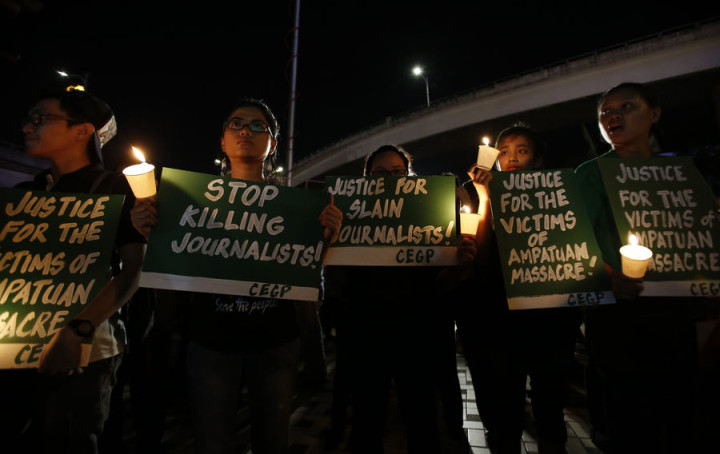“The murder of three journalists in two weeks shows how the lack of progress in ending impunity has emboldened those bent on silencing the press in the Philippines.” Will their killers be brought to justice? – asks Andrew Emett of NationofChange.
Three journalists have been murdered within the last two weeks in order to silence the press in the Philippines. None of their killers have been brought to justice. On Monday, the Committee to Protect Journalists (CPJ) called on the Philippine government to apprehend the killers and prevent these murders from continuing.
Around 10 a.m. on Thursday, four unidentified gunmen shot Cosme Maestrado, a news anchor at Radio Mindanao Network’s local dxOC station, in front of a shopping center in Ozamiz City, Misamis Occidental province, on the southern island of Mindanao. Although the assailants also aimed their guns at Maestrado’s bodyguard and cameraman, Maestrado appeared to be their sole target. Sustaining gunshot wounds to his head, cheek, and abdomen, the radio broadcaster was transported to a local hospital and declared dead 30 minutes later.
Police eventually recovered two motorcycles that they believe the gunmen used as getaway vehicles. The motive for the killing remains unknown.
Known for his hard-hitting commentaries on local corruption and abuse of power, Maestrado recently criticized a local politician over a dubious purchase of construction equipment. He also served as a media consultant to Ozamiz City Mayor Reynaldo Parojinog, who has ordered an independent investigation into Maestrado’s murder.
At 11:45 p.m. on August 20, at least two unidentified assailants gunned down a journalist at his home in Sorsogon. Teodoro Escanilla, a radio anchor for dzMS radio station and a spokesman for the local Karapatan human rights group, answered his front door and began speaking to man who identified himself as “Alex.” According to Escanilla’s wife, she heard her husband talking to the man before gunshots rang out.
Escanilla was found dead in front of his house, but his wife was unable to identify the gunmen. Investigators recovered empty shells from a .45 caliber pistol and anM-16 assault rifle at the crime scene. Although a task force was formed to investigate the murder, police have not yet identified a motive for the crime.
Escanilla anchored the local “Parmana ng Lahi” program, where he regularly spoke about human rights issues and criticized the military. He was also the chairman of the local Anakpawis political party.
Around 10 p.m. on August 18, an unidentified assailant shot newspaper publisher Gregorio Ybanez to death in front of his house in Tagum City. The gunman shot Ybanez three times in the chest and once in the arm before escaping. Ybanez died from his wounds the following morning.
Ybanez was the publisher of the weekly Kabuhayan News Services and president of the Davao Del Norte Press and Radio-TV Club. He also served as a board director at the Davao Del Norte Electric Cooperative power distributor. Investigators have not determined whether Ybanez was targeted for his role as a journalist or as a board director of a local power distributor.
According to the CPJ’s Impunity Index, which spotlights countries where journalists are slain and their killers go free, the Philippines is the third most deadly place for journalists in the world, after Iraq and Syria. Between 1992 and 2015, at least 77 journalists have been killed in the Philippines. CPJ and Human Rights Watch have condemned President Benigno Aquino for allowing the murderers of journalists to continue operating in his country with impunity.
“The murder of three journalists in two weeks shows how the lack of progress in ending impunity has emboldened those bent on silencing the press in the Philippines,” stated Shawn Crispin, CPJ’s senior Southeast Asia representative. “We call on President Benigno Aquino to give top priority to swiftly resolving these egregious cases. Until Aquino demonstrates his government is serious about ending the onslaught, the killings will inevitably continue.”






